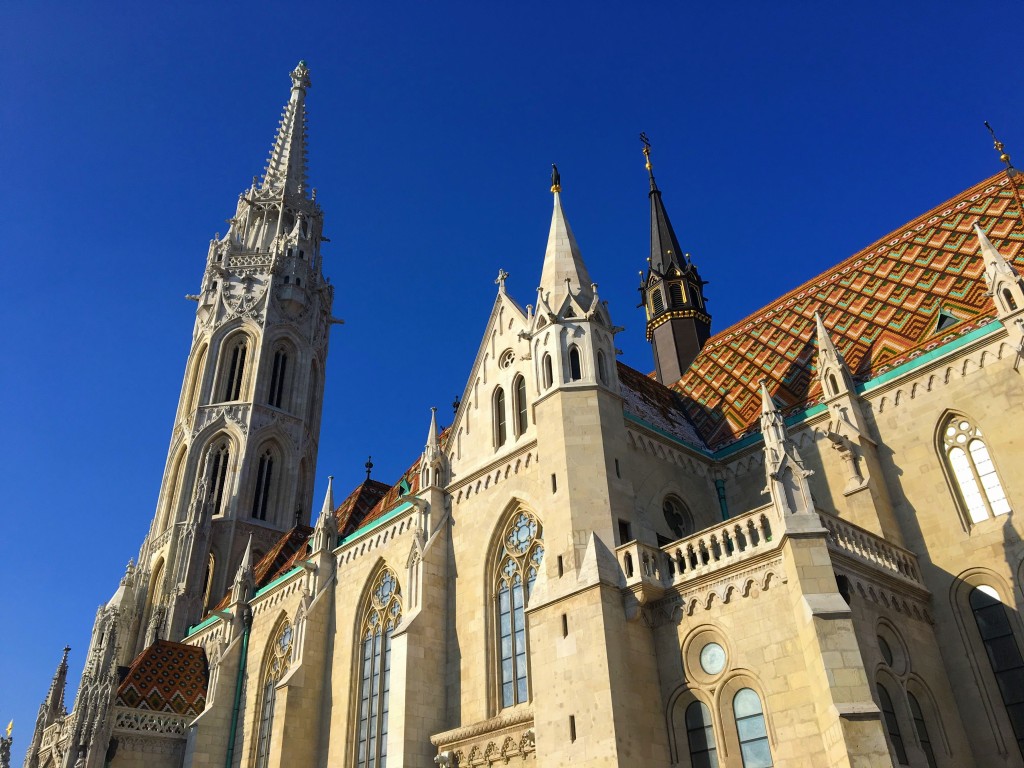A backlog of posts has led me to the efficient conclusion that this post will have two goals: to give a sense of how amazingly beautiful Budapest is with the help of some glamour shots… and to note some initial impressions of the Hungarian language.

My first three weeks in Hungary have been occupied with taking courses with the Babilon Language Studio in Budapest with the other BSM and AIT-ers (AIT is a similar program to BSM, except for computer science students). All in all, the course was quite effective in teaching essential Hungarian (the teachers seemed especially fond of board games) and I would definitely recommend the course for anyone looking to get a basic grasp of the language.
Now that the language classes have officially come to an end (and the math begins), I wanted to take some time and jot down my impressions of Hungarian— it’s quite unlike any other language I’ve encountered!
Throughout the course, our instructors emphasized the fact that Hungarian is an “ancient language,” relatively unchanged from its Asiatic roots. Our guide for the day trips, Emese (pronounced “Em-eh-sheh”) even claimed that if she were to travel to central Asia she could hear the similarities in the languages there and if given enough time would be able to understand and communicate effectively there.

It’s a language that gives impressions of both east and west, influenced by both the Austrians and the Ottoman Turks. Hungarian depends heavily on vowel harmonies and word suffixes for meaning. Suffixes are attached to words depending on the vowel harmonies on the word and can indicate anything from verb tense, to plurality, to the accusative/objective form.
The existence of an accusative form is interesting because as we were told repeatedly, word order in Hungarian is relatively free. For example, take the following English sentence:
“Tomi loves Csilla.”
English word order makes it clear that Tomi is the subject, Csilla is the object. In Hungarian, both of the following sentences mean the same as the above:
“Tomi szereti Csillát.”
“Csillát szereti Tomi.”
Word order plays a role in which words of the sentence are emphasized (as this helpful Duolingo article points out), but not what the sentence as a whole means.

Another interesting verbal tick that I’ve noticed is the all-too-frequent filler word “Jó,” which at least on the face of it means “good,” as in “Jó napot” (good day) or “Jó reggelt” (good morning) but which practically functions as a kind of filler word that Hungarians seem to sprinkle between sentences and to fill the silence (less frequent but also used are “szuper” and “okay”)
One of the hardest things for me to internalize when beginning to learn the language is the pronunciation of the Hungarian alphabet. Thankfully, Hungarian is a language where the pronunciation remains consistent throughout the language (unlike English, as our teachers never failed to remind us), but getting used to the fact that “s” is always pronounced “sh” took quite a bit of time—also note that the city’s name is pronounced “Budapesht,” despite the fact that you may come across as a bit pretentious in America if you emphasize the “sht” a too much. I still am not totally sure how to pronounce the “gy” sound (which is unfortunate because it appears everywhere from the number one—egy—to the word for onion—hagyma), and Lord help me with all the accented variations of the vowels that must be distinguished in order to spell correctly—there are four versions of the letter “o” here: o, ö, ó, and ő!

My Hungarian moment of triumph came at a Fornetti (one of those pastry shops in the subway) when I stopped for a pastry and saw the word “túró-taska.” My heart skipped a beat—I knew what that meant—cream cheese bag! I was so excited that even though I was going to get something chocolatey I ordered it on the spot. “Egy túrós-taskát kérek.” It was a miracle exchange, just like in class: “Más valamit?”
“Nem, Köszönöm.” He said the price. I handed over the money. It was beautiful! And since then on rare occasions, when I mutter Hungarian to mask my American accent I’ll sometimes get lucky enough to get a Hungarian response.
All in all, I have to thank Babilon for taking in a group of about seventy or so Americans with thick, blundering tongues and making semi-decent tourists out of us!

You must be logged in to post a comment.